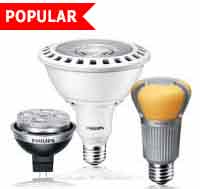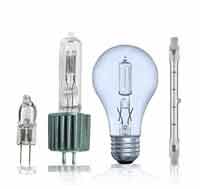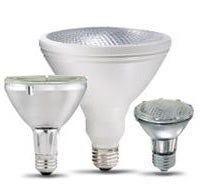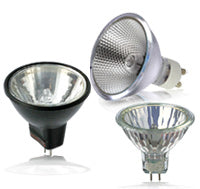PAR Cans, Fresnels, and Ellipsoidals, Oh My!: A Guide to Stage Lighting Fixtures
 When selecting luminaires for your stage, theatre, or concert venue you are immediately confronted with choosing between three essential fixtures: the PAR can, Fresnel, and Ellipsoidal. Though many websites and magazine articles will tell you that these fixtures are important, few will tell you how they differ and in what applications they are best used. The PAR can is probably the most recognized fixture in theatre lighting. Its parabolic shape and metal housing make it a common sight hanging from a truss system in a theatre. LED PAR cans are also becoming common. PAR cans are known for their intense beams, and if used with a colored gel, deep and saturated colors. PAR cans are used when flat light with soft edges is required. The wide variety of PAR can beam types available make the PAR can’s application in the theatre production very versatile.
When selecting luminaires for your stage, theatre, or concert venue you are immediately confronted with choosing between three essential fixtures: the PAR can, Fresnel, and Ellipsoidal. Though many websites and magazine articles will tell you that these fixtures are important, few will tell you how they differ and in what applications they are best used. The PAR can is probably the most recognized fixture in theatre lighting. Its parabolic shape and metal housing make it a common sight hanging from a truss system in a theatre. LED PAR cans are also becoming common. PAR cans are known for their intense beams, and if used with a colored gel, deep and saturated colors. PAR cans are used when flat light with soft edges is required. The wide variety of PAR can beam types available make the PAR can’s application in the theatre production very versatile. The Fresnel is often rectangular and is distinguished by its unique lens and interior track for the bulb. The Fresnel lens consists of a series of concentric circles on the lens’ exterior to allow the light it transmits to travel further. The inside, or back of the lens is pebbled to aid in collecting the emitted light and focusing it. Inside the Fresnel can, the bulb is mounted on a track that slides back and forth, allowing you to change the bulb’s distance from the lens. This feature enables you to change the beam angle from a more spotted beam as the bulb is toward the back of the can to a flooded beam as the bulb is near the lens at the front of the can. Like the PAR can, the Fresnel’s beam is soft-edged. The Fresnel does not have as a large a throw however, and is used in the theatre primarily for general illumination where beam shape is not important and backlighting.
The ellipsoidal, or ERS or Leko, is another common theatre light source. Ellipsoidals have a well-defined beam of light that is focusable using the can’s focus knobs and adjustable barrel to adjust the beam edge. Ellipsoidals often feature a gel frame and template slot for gobos, making it a versatile lighting choice for spotting and the placement of discrete patterns on stage. There are many choices for ellipsoidal bulbs so you have many options for beam angles and many options regarding where in theatre you will position your Ellipsoidal. There are also a number of LED and plasma Ellipsoidals currently manufactured and surely more will appear on the market as alternative bulb types to the incandescent are developed.
Hopefully this guide has shined some light on the differences between PAR cans, Fresnels, and Ellipsoidals and will help you make an informed decision regarding your own lighting system. As usual, contact our experts or add your questions to the comment box of this article if you have any. Good luck!












Stay in Touch